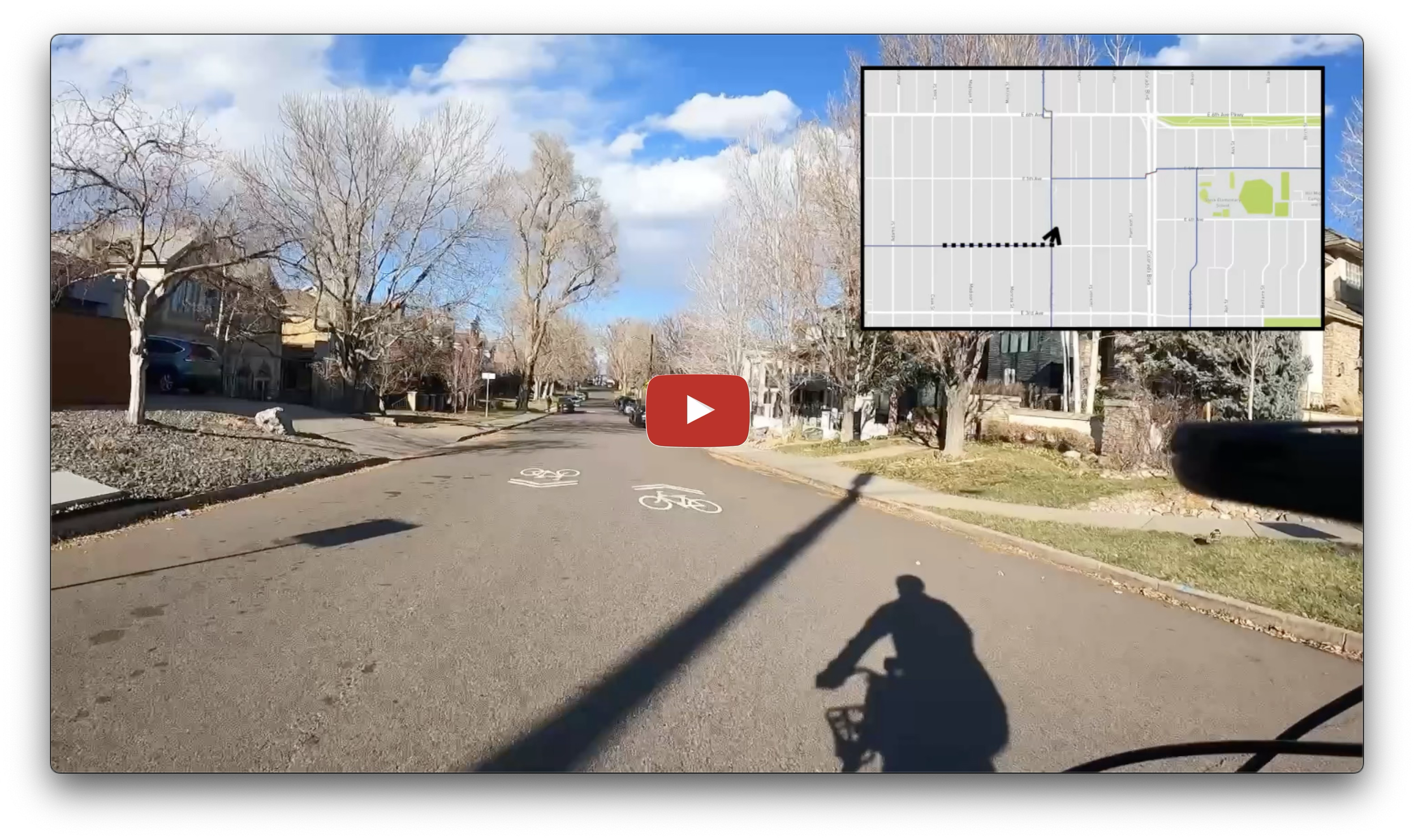Making the Denver Bike Streets Map: It’s About Access
The Bike Streets Map is a living, breathing thing. It has evolved continually since 2018. The most recent version, v9.2, included more than 100 changes.
When we’re working on the map, there’s one Guiding Question: What is the best representation of Denver as it exists today that will make it possible for people of all ages, abilities, and backgrounds to ride bikes to any destination?
Let’s unpack that question. Denver’s current bike infrastructure is a patchwork of trails, protected bike lanes, neighborhood bikeways, buffered bike lanes, conventional bike lanes, and shared lanes.
There are many other public assets, most notably park trails, sidewalks, alleys, crosswalks, and traffic signals.
Our work is about taking that collection of public assets and trying to interpret it in such a way that anyone, irrespective of confidence on a bike, can use it to ride to any destination.
A bike network must create access. If it only works for the most confident bicyclists, it fails. If it doesn’t make it possible for folks to go where they want to go, it fails.
By the City’s definition, buffered bike lanes, conventional bike lanes, and shared lanes are not “high-comfort.” We interpret this to mean that they do not create access. Ride in the bike lane on MLK and you’ll see what we mean.
So we start with trails, protected bike lanes, and neighborhood bikeways, and fill the gaps in between with quiet neighborhood streets.
Since 2018, the process of collecting this information has involved meetups, tons of feedback we get by email, thousands of hours riding and scouting, and more recently, using the routing algorithm we’ve created for the apps to identify gaps in the network.
Over the years, we’ve drawn a lot of inspiration from the idea of an “8-80 city.” Guillermo Peñalosa, who coined this term describes it as follows: “If everything we do in our public spaces is great for an 8-year-old and for an 80-year-old, then it will be great for people of all ages."
Bike Streets routes are sometimes indirect and the map is imperfect, but what we have proven since 2018 with tens of thousands of miles ridden on the network and group rides that have led people of all ages to every corner of the city, is that access is possible today.










